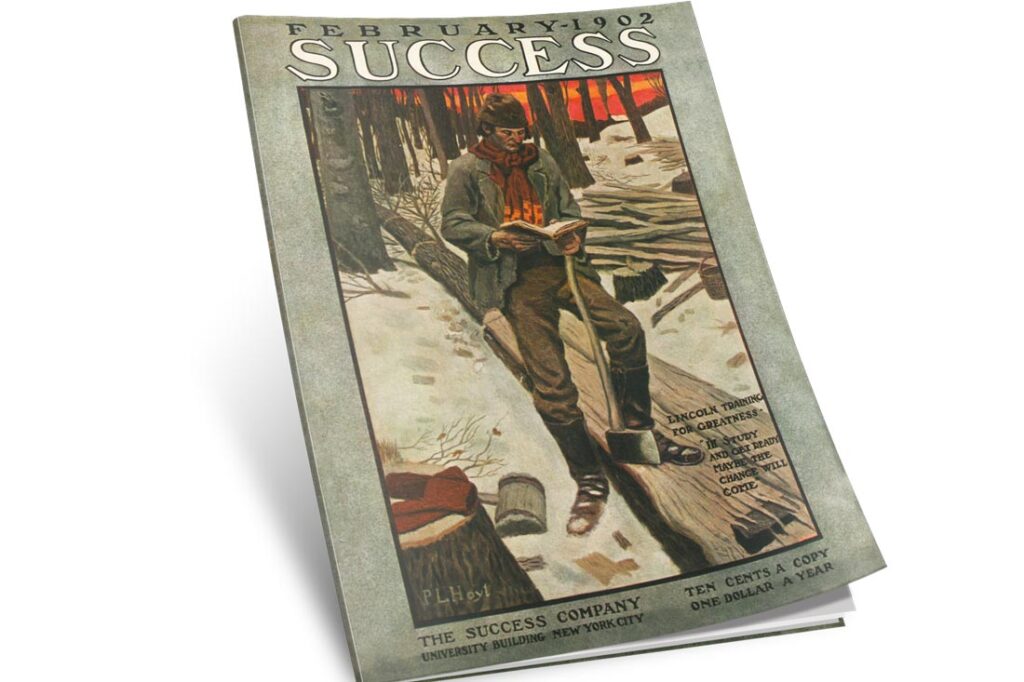FROM THE ARCHIVES
February 1902
For years, the morning drumbeat of England has echoed around the world, but now that martial sound is followed by a mightier one—the whir of the American machine tool. The wars of the future will not be struggles by armed men for the control of territory, but contests in which automatic machines—automatic factories, even—will battle for the trade of the world. In preliminary skirmishes of this bloodless warfare, to be waged more fiercely than were any of the wars of conquest of the ancients, America has so signally triumphed that the Old World rulers are alarmed by the growing cloud in their commercial skies, to which they refer as “the American danger.’’
This is an age of steel. Wherever masses of iron and steel and brass are being shaped into complex things useful to man, from delicate watch bearings to massive propeller shafts for ocean greyhounds, there will be found American brains represented by power-driven tools of wonderful construction, machines that work with split-hair accuracy and electric speed. The human hand can never perform an operation twice alike, but these hands of steel, when once given their work, cut and bore and grind for days and weeks, turning out in duplicate many thousands of things, of complex formation, that do not vary a thousandth of an inch from the original pattern.
Ten years ago, the American machine tool was little known outside of our own shops. When our captains of industry began to wage war on the markets of the Old World, our antagonists sent agents here to learn how we make locomotives and bridges and typewriters and watches quicker and cheaper than they. They found that we have a formidable combination of cheaper raw materials, more efficient workmen and wonderful machine tools. They have taken the only weapon we could share with them—the machine tool—and now many millions of dollars’ worth of American tools are being used in foreign factories throughout the world.
In all the industrial towns of the British Isles, wide-awake manufacturers are recognizing the value of our machine tools. They are making armor plates for the British navy, guns for the British army, locomotives for British railways and machinery for the British merchant marine. On the continent, American machine tools are penetrating into the remotest manufacturing towns. In France, they are installed in automobile and gun factories; in Germany, in shipyards and electrical works; in Russia, in railroad shops and arsenals. Go into any of the great factories of Belgium, Holland, Denmark, Sweden, Switzerland, Austria-Hungary, Italy or Spain, and you will find the marks of American toolmakers. Even in far-off China and Japan, in Australia and New Zealand, in the Hawaiian lslands—in whatever corner of the earth steel is shaped—the whir of the American tool is heard.
To the layman, a tool is a chisel, drill, hammer, saw, punch or plane that can be used by hand, but a machine tool is a very different thing. It may be a delicate piece of machinery that forms a small brass screw for a watch movement or a massive thing, weighing hundreds of tons and as high as a house, that bores and planes a great steel ingot as a boy would whittle a stick of wood. A machine tool is a power-driven tool for cutting metal. The cutting parts, fashioned in varied ways, are made of tool steel of great strength and hardness.
These machines seem to think faster and more accurately than men
The most highly developed of machine tools is the automatic screw machine, and like many another contrivance for saving labor, its home is New England. It is a development of the ordinary steel-working lathe, the intermediate step being the monitor lathe, in which the various cutting tools protrude from the side of a steel turret like 13-inch guns from a battleship turret. In the nonautomatic screw machine, the turret is revolved by the operator, so as to bring each tool into play, just as the turret on the old Monitor was revolved to bring one gun after another into action. But in the automatic machine, the work is done without human guidance.
In making screws, nuts, bolts, studs and other small pieces that must be turned, drilled or threaded for watches, clocks, typewriters, electrical instruments and other mechanisms, all the operator has to do is to feed the stock, a long, thin rod of steel or brass, to the machine.
Our grandfathers did not dream of factory automatons that would do the work of men. The making of a screw was a difficult task, occupying 20 or 30 minutes, and no two screws could be made exactly alike. In those days, “handmade” was a mark of superiority. This is the day of interchangeable parts. In a particular type of bicycle, the screw in a certain position will fit in the same position in any one of a thousand other bicycles of similar type. To make machine tools that will produce accurate duplicate work, the tool manufacturers use measuring machines of great accuracy.
Errors can be detected within one fifty-thousandth of an inch
What the screw machine has done in the turning of small pieces of mechanisms, the modern milling machine has done in shaping flat and irregular surfaces. It is this tool that has made possible the modern bicycle, typewriter, firearm, sewing machine and watch. Were there no milling machines, these everyday articles could only be made at five or six times their present cost.
American machine tools rank among the great achievements of the age. They are the inanimate basis of our industrial supremacy. Rapidly, they are taking the places of men, and in our great factories, where formerly stood long lines of men at the lathes, now are seen only rows of whirring automatons with here and there a stray attendant. The day of the manless factory seems to be near. In America, we have learned that labor-saving machinery, while it may work temporary hardship for a time, in the long run helps to raise the standard of living and makes all men richer instead of poorer.
This excerpt has been edited for length and clarity.
This article originally appeared in the January/February 2024 issue of SUCCESS Magazine.



